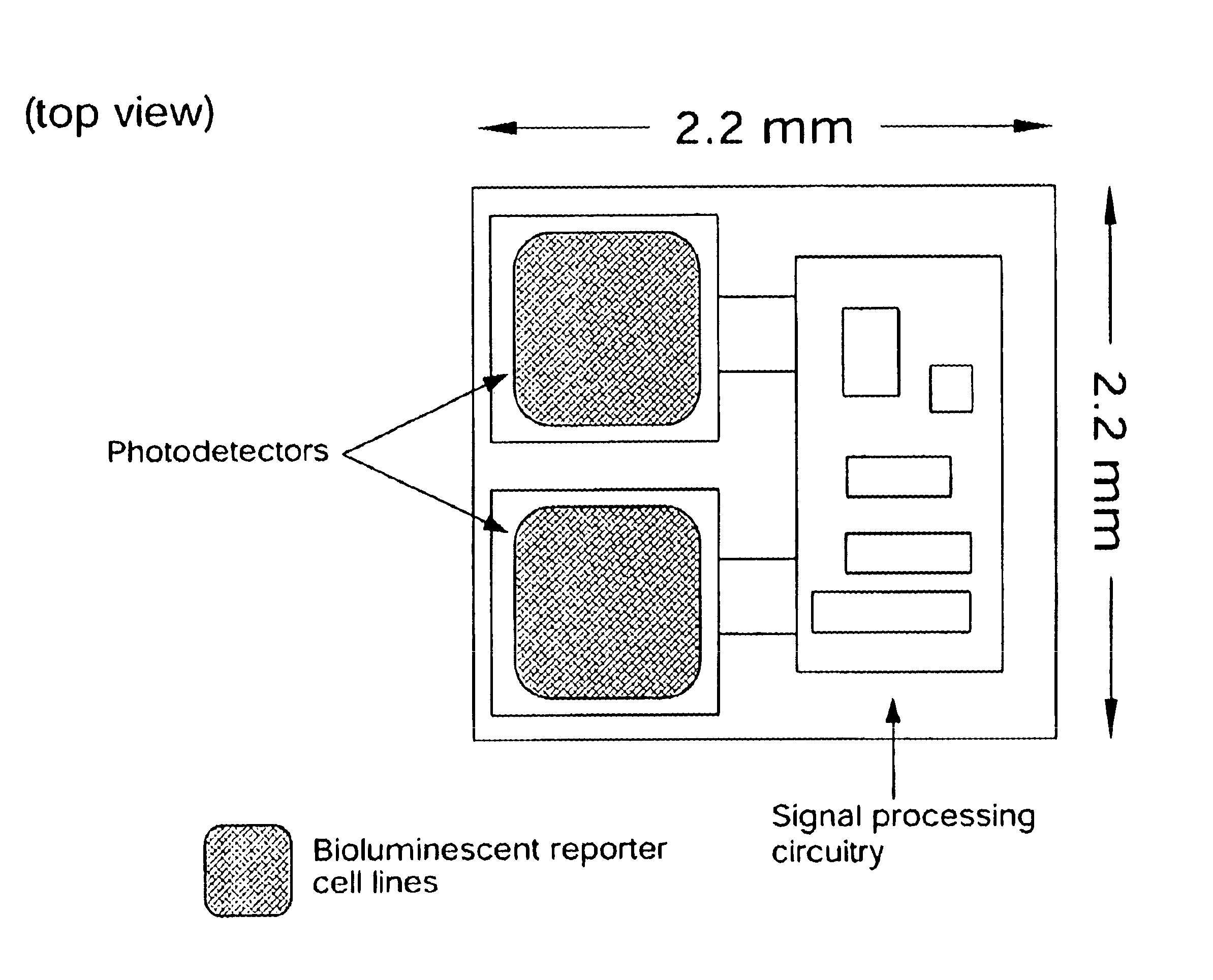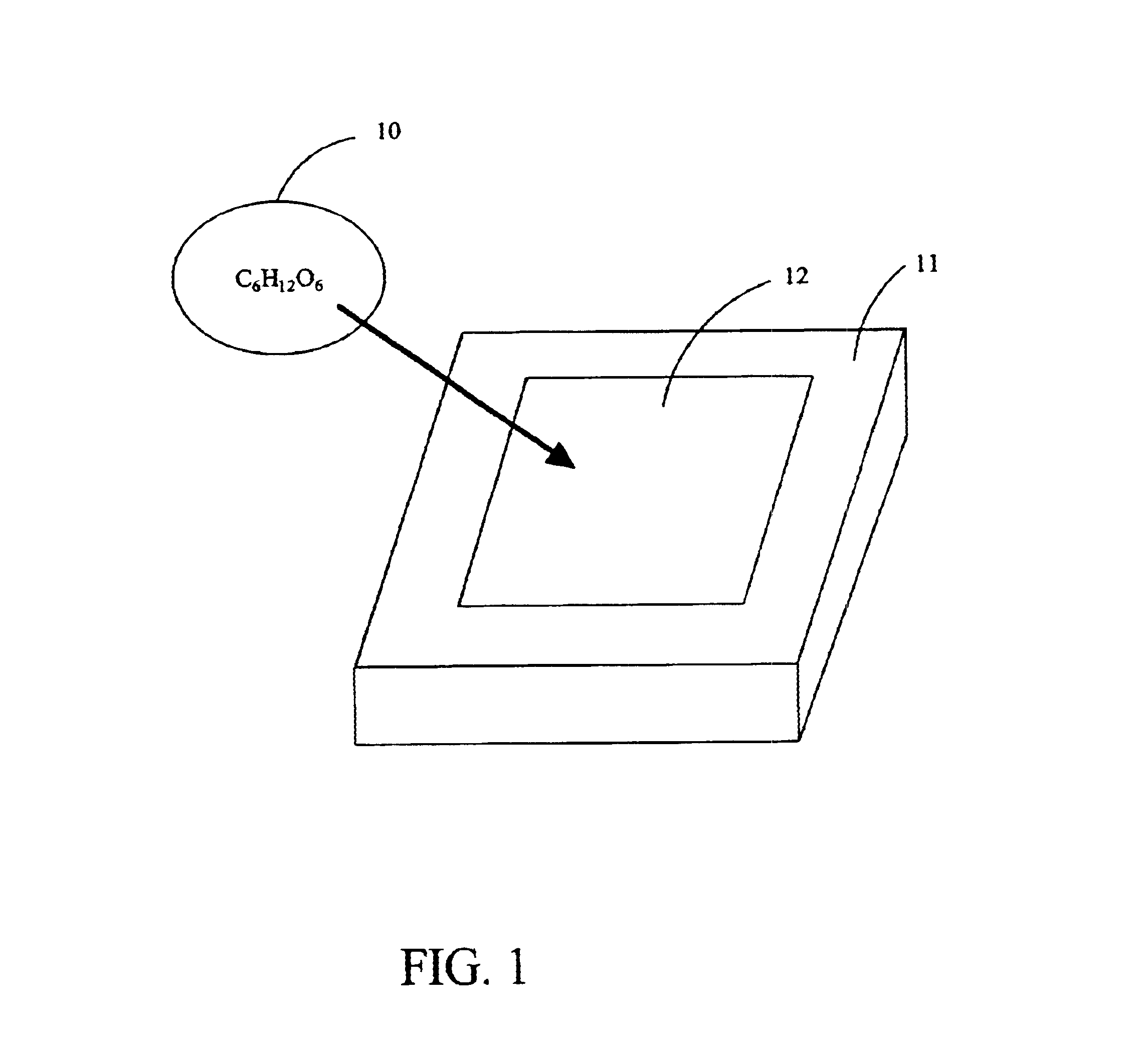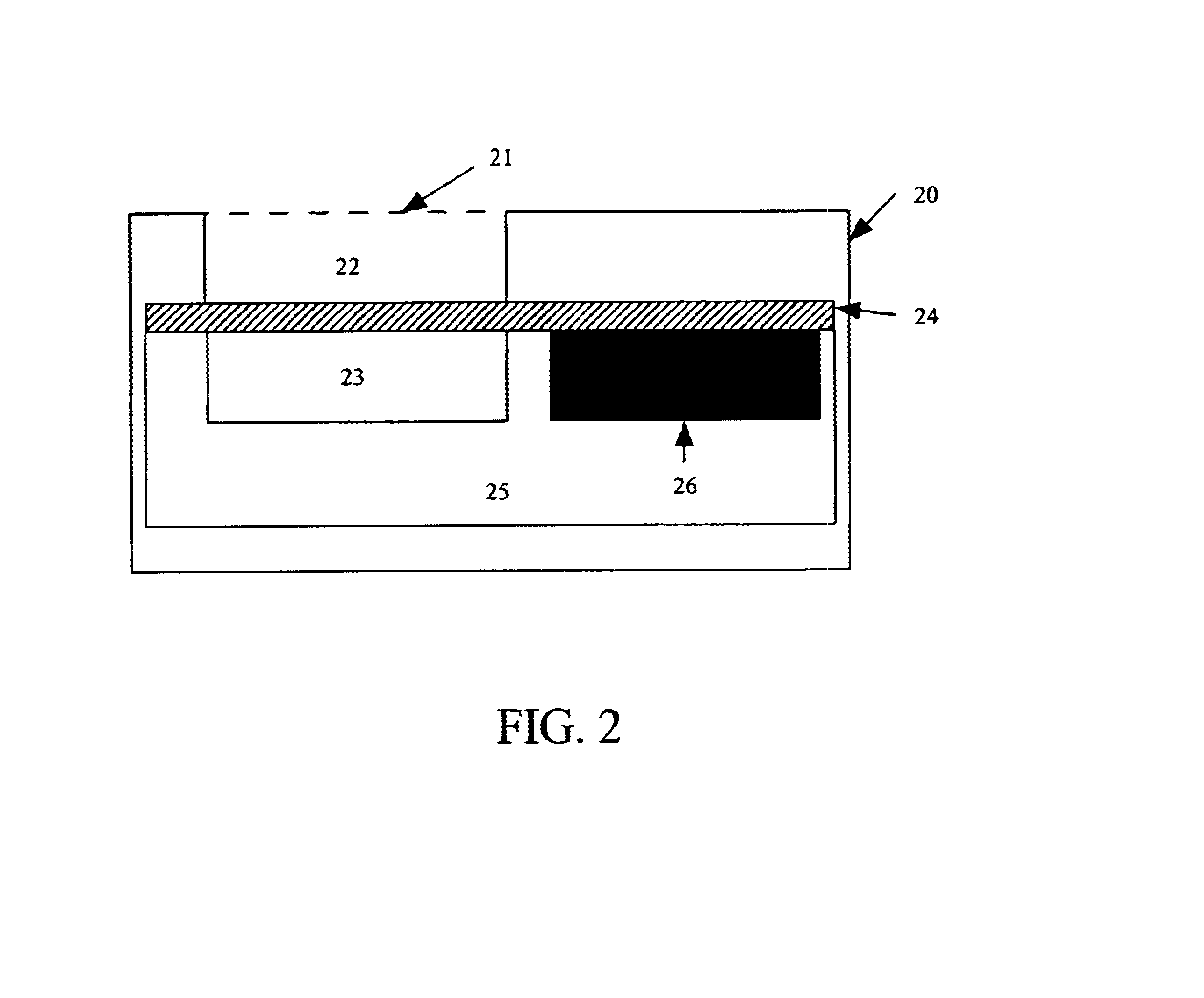In vivo biosensor apparatus and method of use
a biosensor and in vivo technology, applied in the direction of material analysis, positive displacement liquid engine, biomass after-treatment, etc., can solve the problems of inability to detect analytes in situ, cell lysation must be destructive, and the system is quite complicated, so as to achieve stable dosing of insulin, less insulin can be administered, and cost-effective drug administration
- Summary
- Abstract
- Description
- Claims
- Application Information
AI Technical Summary
Benefits of technology
Problems solved by technology
Method used
Image
Examples
first embodiment
In the first embodiment, the photodetector is fabricated in a standard N-well CMOS process. Shown in FIG. 5A, this detector is formed by connecting the PN junction between the PMOS active region and the N-well in parallel with the PN junction between the N-well and the P-type substrate. The resulting detector is sensitive to light between approximately 400 nm and approximately 1100 nm, a range that encompasses the 450 to 600 nm emission range of most commonly used bioluminescent and chemiluminescent compounds or organisms. In order to meet the requirement that the device have a low background signal, the device is operated with a zero bias, setting the operating voltage of the diode equal to the substrate voltage. The photodiode coating may be formed with a deposited silicon nitride layer or other material compatible with semiconductor processing techniques.
In the second photodetector embodiment, the detector is fabricated in a silicon-on-insulator (SOI) CMOS process. The internal l...
example 1
5.1 Example 1
Construction of a Bioluminescence Reporter for Mammalian Cell Lines
To facilitate the construction of an implantable bioluminescent glucose sensor it will be necessary to create a bioluminescent reporter system that can function without the exogenous addition of substrate for the luciferase reaction. This exogenous addition is due to the complex nature of the production of luciferins for the various eukaryotic luciferases. Cells must be either permeablized or lysed and then treated with an assay solution containing luciferin. Therefore, the present state of bioluminescence reporters used in eukaryotic molecular biology makes them unsuitable for "on-line" monitoring. The firefly luciferase has been used in examining the regulation of L-pyruvate kinase promoter activity in single living rat islet .beta.-cells (Kennedy et al., 1997). However, these cells had to be perfused with Beetle luciferin in order to generate a luminescence response.
To alleviate this limitation, a pre...
example 2
5.2 Example 2
Construction of a Glucose Bioluminescent Biosensor
The firefly luciferase has been used in examining the regulation of L-pyruvate kinase promoter activity in single living islet .beta.-cells (Kennedy et al., 1997). A glucose response element designated the L4 box has been determined to be in the proximal promoter. A 200-bp fragment containing this region was cloned in front of the firefly luciferase (luc) in plasmid pGL3Basic resulting in a glucose reporter plasmid designated p.LPK.Luc.sub.FF. Results resulted in the detection of single cells that were exposed to 16 mM glucose but not 3 mM glucose. However, these cells had to be perfused with Beetle luciferin making it unacceptable for an on-line biosensor. Therefore, a bioluminescent sensor for glucose was constructed by replacing the firefly luciferase in p.LPK.Luc.sub.FF with the fused luxAB gene as described below.
PUM
| Property | Measurement | Unit |
|---|---|---|
| wavelength | aaaaa | aaaaa |
| wavelength sensitivity | aaaaa | aaaaa |
| wavelength sensitivity | aaaaa | aaaaa |
Abstract
Description
Claims
Application Information
 Login to View More
Login to View More - R&D
- Intellectual Property
- Life Sciences
- Materials
- Tech Scout
- Unparalleled Data Quality
- Higher Quality Content
- 60% Fewer Hallucinations
Browse by: Latest US Patents, China's latest patents, Technical Efficacy Thesaurus, Application Domain, Technology Topic, Popular Technical Reports.
© 2025 PatSnap. All rights reserved.Legal|Privacy policy|Modern Slavery Act Transparency Statement|Sitemap|About US| Contact US: help@patsnap.com



